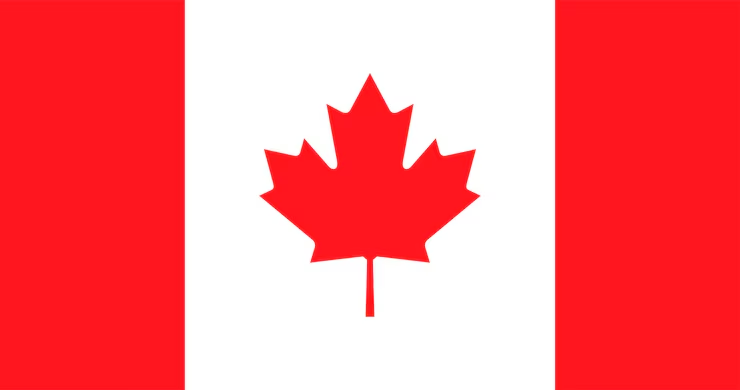Canada’s payment rails play a crucial role in how money flows across the country and beyond. Whether you're a consumer sending an e-Transfer, a business processing payroll, or a financial institution clearing billions in settlements, you're relying on Canada's payment rails. These are the invisible tracks that move trillions of dollars each year; quietly, securely, and (increasingly) in real-time. This blog talks about Canada payment rails, Canadian payment infrastructure, payment systems in Canada, real-time payments Canada as well as compares Interac vs EFT vs RTGS.
Canada Payment Rails
Canada’s payment rails are the backbone of how money moves between banks, between businesses, and between people. Whether it’s a $10 coffee or a $10 million wire transfer, these systems make sure the funds land where they’re supposed to. Retail rails comprise Interac e-Transfers, debit transactions, and mobile wallets which most people use every day. Wholesale rails handle massive transfers between financial institutions which is now being done through the Large Value Transfer System (LVTS), but is shifting to a Real-Time Gross Settlement system (RTGS) so as to modernize payments in Canada. What makes Canada’s payment rails work so well is its ability to handle a wide range of payment types without compromising on security, speed, or compliance.
Canadian Payment Infrastructure
Canada’s payment infrastructure exists on three key pillars. First, there’s clearing. This is where payments get sorted and processed. Things like cheque deposits, direct deposits, and Interac transfers all fall under this. It’s the behind-the-scenes work that lines everything up before the actual money moves. Next comes settlement. This is where the funds are actually transferred between banks. Right now, that’s handled through the LVTS system, but it's transitioning to RTGS. The idea is simple: when banks move large sums, there needs to be a precise, accountable way to settle it. The third pillar is governance. Payments Canada, the Bank of Canada, and OSFI set the rules, manage risk, and keep the entire system compliant and stable. With stablecoin-powered rails and AI smart routing, TransFi complements the existing Canadian payment infrastructure by offering fast, cost-effective, and secure cross-border solutions. If you’re a business exporting goods, and need rails that support the Canadian financial system needs including foreign exchange, compliance, and settlement; TransFi is indeed the best choice.
Payment Systems in Canada
Payment systems in Canada are amongst the best in the world. In this section we talk about the most common payment methods Canadians use everyday and the key payment systems in Canada.
Common Payment Methods
- Credit and Debit Cards: Visa, Mastercard, and American Express dominate the card payment space. Contactless "tap to pay" has become the default for many everyday purchases due to its speed and ease of use.
- Interac: There are two main Interac services most Canadians use. Interac Debit connects directly to your bank account. It’s what you use in-store when you're not using a credit card. Interac e-Transfer lets people send money to each other instantly, whether it's splitting dinner or paying rent. It’s quick, reliable, and still growing fast.
- Digital Wallets: Apple Pay, Google Pay, and Samsung Pay are picking up traction, especially among younger users who prefer using their phones over cards or cash.
- Cash: Cash is still used, especially for small purchases, but its share is declining annually.
Key Payment Systems in Canada
- Lynx: Being central to Canada’s wholesale payment systems, it is the new real-time gross settlement system (RTGS), replacing the older LVTS. It’s used primarily for high-value, time-critical wholesale transactions between financial institutions.
- Automated Clearing Settlement System (ACSS): ACSS handles the majority of retail clearing in Canada. It processes EFTs, cheques, direct deposits, pre-authorized debits, and Interac Debit payments.
- Interac Corp.: Interac is an important part of the Canadian fintech ecosystem and operates both debit and e-Transfer services, evolving to support broader use cases, including real-time payments and APIs for fintech integrations.
Also read about: Stablecoin Payments in the Netherlands: How Dutch Startups Are Leveraging On-Chain Dollars
Real-Time Payments Canada
Real-time payments in Canada have evolved rapidly with Interac e‑Transfer offering instant retail payments today. On the wholesale side, Canada is transitioning from LVTS to RTGS with Payments in Canada modernizing. Key upgrades include ISO 20022 message rich data standards with more info in each payment, 24x7x365 processing with no confinement to business days and faster funds availability for downstream users.
Real-time payments in Canada make it possible to send payroll, invoices, as well as supplier payments in seconds with rich metadata, tracking and notification capabilities. For businesses handling international payroll or invoices, this is huge with no more waiting days for a batch payment to clear.
TransFi boosts this by bridging Canadian real-time rails with global stablecoin rails which means you can send a CAD invoice and the recipient gets USD, EUR, USDT instantly. What makes it infrastructure-worthy is its AI-powered smart routing, enterprise-grade security, instant settlement capability, and global compliance, which help Canadian businesses move money internationally faster and more cost-effectively than traditional wire or SWIFT payments.
Interac vs EFT vs RTGS
In Canada, Interac, EFT, and RTGS are ways to move money around, but they work quite differently. Interac is a Canadian system mostly used for everyday payments. When you pay for something at a store with your debit card, or send money to a friend through your phone, that’s usually Interac. It’s fast, cheap, and works in real-time, meaning the money moves instantly. EFT, which stands for Electronic Funds Transfer, is a broad term for any electronic transfer of money between accounts. This includes things like direct deposits from your employer or paying your bills online. It’s often not instant and sometimes it takes a few business days to clear. RTGS stands for Real-Time Gross Settlement. It’s a system used for big, urgent transactions, typically between banks or businesses. Think of it as the heavy-duty system that moves a lot of money in real time. This system is much more formal and is used for large transfers, like when a company pays another company a massive sum or a bank needs to settle debts with another bank. What this really means is that each system is tailored for different use cases with business and banks using this layered approach. Interac serves consumers instantly; EFT handles batch payments; and RTGS supports large-scale institution-to-institution clearing and liquidity.
Canada’s Retail and Wholesale Payment Systems Explained
Retail payments are what most people use for everyday stuff. Interac is used for fast transfers between people, EFT for things like direct deposit of paychecks or paying bills, and cards like Visa and Mastercard to shop in stores or online. These payments are usually quick and easy, and most of us do them daily without thinking much about it. Wholesale payments are the big transactions that usually happen between banks or large companies. For example, LVTS is used when a bank needs to move a large sum of money to another bank in Canada. RTGS helps big banks settle transactions in real time. These systems deal with large amounts of money and are a bit slower and more formal than retail systems. In simple terms retail payments are for everyday people, like buying things or paying bills and wholesale payments are for the big transactions that happen between banks or companies.
Conclusion
Canada payment rails and Canadian payment infrastructure have steadily evolved from cheques to Interac and LVTS to RTGS modernization. Canadian banking rails are solid, but when it comes to cross-border, they hit limits like slower speed, higher costs, and limited FX visibility. That’s where TransFi shines. Powered by stablecoin rails, the platform plugs into Canadian rails, offers instant settlement, best FX, and AI smart-routing across dozens of currencies and payment methods.
FAQs
1. How payment rails work in Canada?
They function as linkages between financial institutions for payment clearing and settlement. On the retail side, Interac e‑Transfer and EFT batch move money day-to-day. Wholesale rails like LVTS and RTGS handle large-value payments between banks with full settlement guarantees.
2. What is the best cross-border payment solution in Canada and why?
TransFi is the best cross-border payment solution in Canada because it layers stablecoin rails over Canadian payments infrastructure, connects 40+ currencies, 80+ digital assets, 250+ local methods, and offers AI-smart routing for lowest fees, fastest delivery, best FX, global compliance, and instant settlement.
3. What is the guide to Canada’s real-time payment system?
Payments in Canada are modernizing, with ISO 20022 messaging 24/7. Start with Interac e‑Transfer for retail real-time, then transition to RTGS for wholesale under. TransFi integrates with both retail and wholesale real-time rails to enable instant cross-border transfers, layered on Canada payment clearing systems.
4. What is the future of payments infrastructure in Canada?
The future of payments infrastructure in Canada is more ISO 20022 adoption, full RTGS rollout, open API rails for fintech innovators, and global currency rails (stablecoins). Better interoperability, richer payment data, 24/7 service, and seamless cross-border integration especially via platforms like TransFi that embed with Canadian payment systems is also expected.
5. What is the comparison of Interac, EFT, and RTGS in Canada?
Interac means instant CAD retail transfers, EFT means batch payments that are comparatively slower but low-cost and RTGS means real-time high‑value wholesale transactions.
Daftar Isi
Artikel yang Disarankan
Jelajahi produk kami

Lakukan pembayaran global dengan kecepatan klik

Terima pembayaran, hapus batas.

Buka Transaksi Mata Uang Digital yang Mulus Di Mana Saja









.png)














